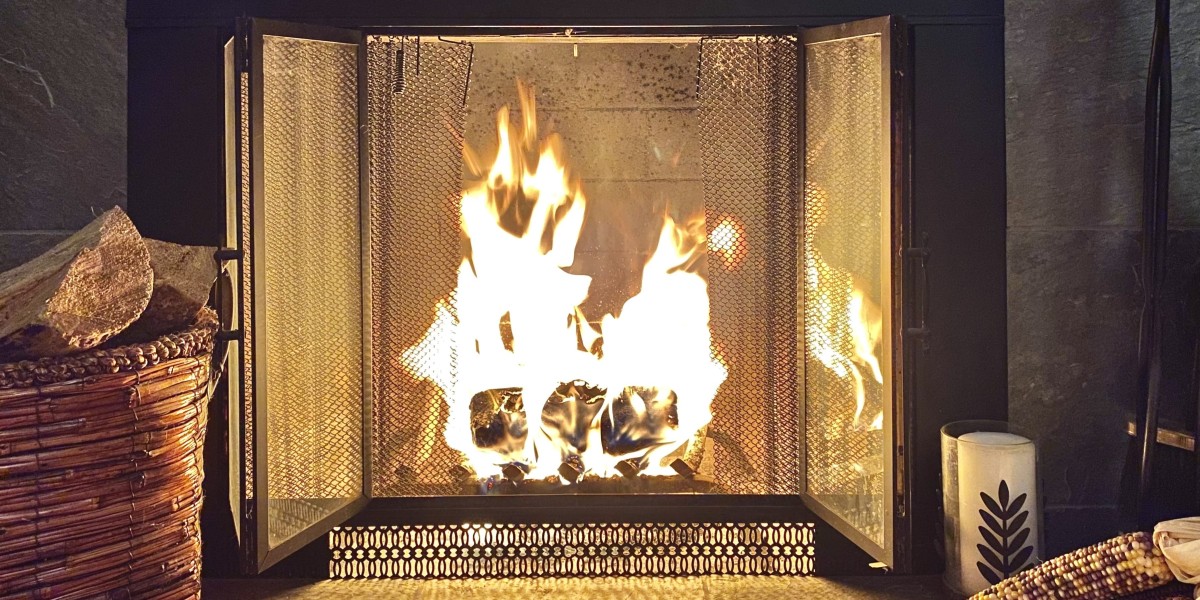In contrast to traditional open fireplaces, wood stoves are engineered and designed to burn wood. This allows them to meet stricter emission regulations.
Wood burning stoves produce sparkling yellow flames and soft crackling sounds. They also give warmth and a warm sensation. However, the smoke it creates contains carbon monoxide and toxic air pollutants like formaldehyde, benzene and polycyclic aromatic hydrocarbons.
Efficient
Fireplaces and stoves that burn wood provide beautiful and natural heat source to the home, but they are also extremely efficient. A top-quality wood stove can be eco-friendly up to 77 percent. With the rising cost of energy, it is crucial to ensure that you get the most benefit from your log burner The good news is that it's more simple than ever before!
The moisture content of wood is one of the main factors that determines how efficient a stove that burns wood is. This is why we recommend only using seasoned wood, that has been dried for a minimum of one year, and more often two years. The dryer the wood is, the more efficiently it burns which results in less smoke and harmful emissions.
Another benefit of a wood-burning stove is that it's a low carbon source of fuel, which is fantastic for the environment. Additionally, by purchasing locally-sourced firewood, you are aiding in the active management of woodlands which is a good thing for wildlife.
The only thing that a wood burning stove requires in terms of maintenance is to take away and get rid of the ash. This can be a bit of a hassle but it is worth it to ensure you get maximum heat from each and every log. If you wait for the ashes 2-3 days to completely cool and then, they can be used as a non-toxic, environmentally friendly melt of ice. They can be used to polish jewelry or absorb odors.
A fireplace with a wood burner is a timeless classic. While they're not as popular than gas fireplaces, their appeal and charm of a fire that is roaring can't be ignored. These fires are perfect for snuggling in on cold winter evenings, and they make a warm and inviting area in your home. A high-quality wood stove will pay off for many years. Contact us today to learn more about how our expert chimney sweeps can help you get the best out of your stove.
Low Carbon
Burners that are clean and efficient are among the best ways to save money on logs while keeping your home warm. They also aid local woodland management. This is a fantastic way to support wildlife in your local area.
Wood-burning fireplaces and stoves create very little pollution if they are maintained properly and used with dry, seasoned and dry firewood. However, if they are not maintained properly or are using wood of poor quality the smoke generated by them is contaminated with fine particles (known as particulate pollution) which can cause irritation to the lungs and other organs. Carbon monoxide, toxic air pollutants such as benzene and formaldehyde and polycyclic aromatic hydrocarbons are also in the. Inhaling these types of air pollution can cause lung irritation wheezing, coughing and asthma attacks. It can even cause serious health issues like cancer, heart disease, or premature death.
Some people fear that using a wood burning stove could contribute to climate change, but this is not necessarily the case. Burning wood is a carbon neutral energy source. In the course of the life of a tree, it absorbs carbon dioxide, and when it is burned, the absorbed carbon is released back into the atmosphere.
The wood is sourced locally, which reduces the amount pollution that is emitted in the transportation process. It is also important to select high-quality well-seasoned hardwoods, as they will give an extended and even burning time than softwoods.
Modern, EPA certified wood stoves and heaters (such as those made by Charlton & Jenrick) have significantly lower emissions than older stoves. They have been tested and certified to meet 2020 EPA standards which are much more strict than previous emissions limits.
All wood burning stoves must be fully vented to the outside of your property to ensure that they do not cause a build-up of exhaust inside your home. By keeping flames above the logs and making sure you use dry, seasoned wood and all our clean burn and DEFRA exempt stoves produce very clear exhaust and have particulate levels 60% or more below the DEFRA limit.
A wood burning stove equipped with an acatalytic converter or hybrid unit can offer the ultimate low-carbon solution for heating. These units ignite the particulates and gases from the initial combustion at a later stage by mixing them with superheated air. They then funnel the remaining gases and particulates through a catalytic combustor for the third and final combustion, further reducing emissions to a level much lower than the standards set by the government.
Clean Burn
Cleanburn wood stoves burn fuel at the highest possible efficiency. This results in the release of very small particles into air when burning wood. The air management system of the stove regulates the intake and exhaust of gases to ensure that the combustion process takes place in a controlled and sealed environment. It also regulates the flame's height to reduce emissions and maximize heat output.
This means that your chimney and surrounding area will be much cleaner than older stoves. Particulate matter, also known as particle pollution, from wood that is not properly burned can cause respiratory problems, such as coughing and wheezing. It can also contribute to heart diseases as well as stroke, diabetes and other serious illnesses. Wood burning can also contribute to poor air quality in cities.
The smoke that is emitted from poorly combusted wood contains fine particulate pollution as well as hazardous air pollutants such as carbon monoxide, volatile organic compounds, nitrogen oxides, benzene formaldehyde and polycyclic aromatic hydrocarbons. These particles can get into the organs of the lungs and cause discomfort, damage and even death. Airborne dust can also contaminate surfaces within your home with a smudge-like feel.
It's important to use only top quality, seasoned, and dried firewood for your fireplace with a wood burner. The most efficient woods for heating are hardwoods, such as oak, ash and beech. Hardwoods have a higher density and BTU content and they offer more heat than softwoods.
You should also check whether your local authority has any regulations regarding wood burning. These may include nuisance/odor rules and visible emissions or the opacity limit for smoke.
It is important to keep the glass of a wood stove that has a glass front free of dirt and deposits. This can be done using a dry cloth or oven cleaner spray. You can also add bicarbonate of soda with a bit of water to the glass.
Regular maintenance of your stove and chimney is also vital. This includes regular chimney cleanings to remove creosote and ensure the proper functioning of your flue. Be sure to note dates for regular inspections in your calendar, since this will allow you to avoid costly repairs and extend the lifespan of your wood stove.
Low Maintenance
Many people choose to install wood-burning fireplaces due to the natural warmth they create. This type of fireplace needs some maintenance and upkeep. The chimney, flue and stove are all potential sources of house fires if not maintained and cleaned regularly. Fireplaces are also an excellent source of warmth when power is out, particularly in winter when snowstorms can cause branches of trees to fall and rip up power lines.
Using a wood stove to heat your home will reduce your carbon footprint substantially when compared to other fossil fuel sources, such as gas. Modern wood stoves, inserts, and fireplaces are designed to meet EPA standards (Environmental Protection Agency) which means they emit very little emissions. The more seasoned the wood is and the better it is, the more efficient it will be as well which means you'll burn less to generate the same amount of heat.
These fireplaces require some upkeep and care, including ensuring they are positioned away from the ignition source and that a screen is in place. Air flow will be improved by keeping the grate free of ash and other debris. This will ensure that the fire is burning longer and your home clean. You should have your stove and chimney swept at least twice per year to prevent creosote build-up which could be a dangerous fire hazard and a clog that can restrict the flow of air.
It can take a while for a new homeowner to master the art of to ignite, light and maintain a constant fire in the fireplace. Once you've mastered the art of lighting, your wood burning stove will be a source for warmth and comfort within your home.
Wood burning fireplaces have been around in one form or another for over 500 years. They've gained popularity due to their efficiency, sustainability and the natural warmth of wood. If you're thinking about buying installing a new heater, speak with your local Regency certified dealer to find out more about the benefits of a wood stove or an insert for your home.








